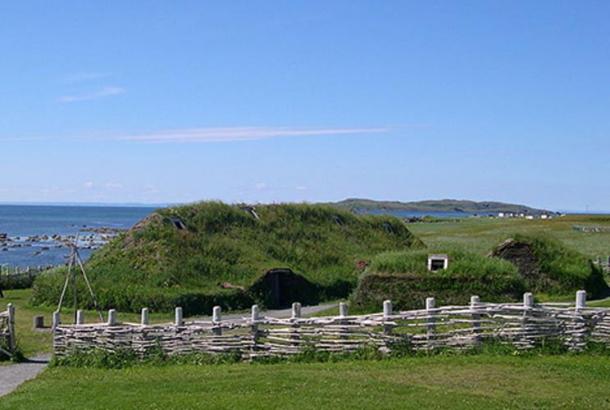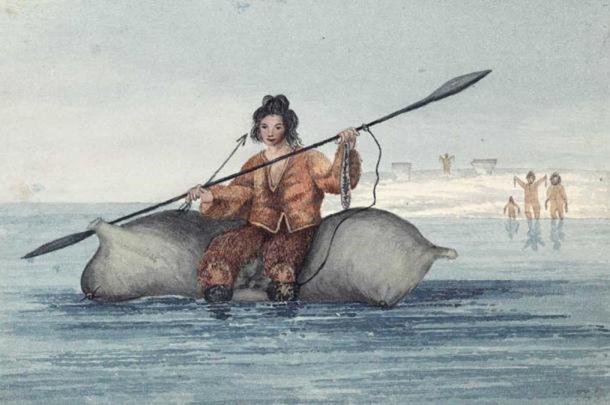Contrary to popular belief, Christopher Columbus was not the first European to establish an outpost in the Americas – some 500 years earlier, a Viking named Leif (“the lucky”) Erikson established a small village in Newfoundland, Canada.
Evidence of the Viking Arrival to Vinland
Although the Erikson family originated in Norway, they moved steadily westward as progressive generations were banished or exiled for manslaughter and other crimes. In approximately 1000 AD, Leif led a small expedition to Canada and established a colony there. Experts
 Eric the Red and Leif ...
Best Price: $2.91
Buy New $19.95
(as of 07:45 UTC - Details)
agree that the Vikings only lasted three to ten years at Vinland, eventually leaving not because of the cold or lack of food, but rather because they were chased off by the thousands of natives who inhabited the area.
Eric the Red and Leif ...
Best Price: $2.91
Buy New $19.95
(as of 07:45 UTC - Details)
agree that the Vikings only lasted three to ten years at Vinland, eventually leaving not because of the cold or lack of food, but rather because they were chased off by the thousands of natives who inhabited the area.
In 1961, a team of investigative archaeologists led by Helge Ingstad and his wife Anne Stine Ingstad discovered the remains of an ancient Viking settlement on the northern tip of Newfoundland, which they named L’Anse aux Meadows. The site contained the foundations of sod longhouses built in the Viking style as well as a series of Viking artifacts including a ringed pin, a soapstone spindle whorl, a bone pin, a whetstone, iron boat rivets, and worked wood.

A recreation of the Viking L’Anse aux Meadows site, Newfoundland, Canada. (Dylan Kereluk from White Rock, Canada/CC BY 2.0)
It was believed that the settlement was used for gathering wood and iron-smelting. In addition to iron, the presence of butternut seeds convinced researchers that this must have been a Proto-European settlement, as neither of those things is believed to have been present in the Americas in the 11th century.
The settlement, now a UNESCO World Heritage Site, was honored with a Statement of Significance that declares, “L’Anse aux Meadows is the first and only known site established by Vikings in North America and the earliest evidence of European settlement in the New World. As such, it is a unique milestone in the history of human migration and discovery.” (UNESCO, 1978)
Vikings VS Proto-Inuit Tribes
Why are the most advertised Gold and Silver coins NOT the best way to invest?
Little is known about the Proto-Inuit tribes living in Newfoundland at the time of Erikson’s arrival to Vinland. Historians believe that it was most likely either the Thule or Dorset tribes who controlled the coast in 1000 AD.

Drawing of a Sadlermiut man on inflated walrus skins bringing two dried salmon and a flint-headed arrow as a peace offering to
 The Lost Colonies of A...
Best Price: $6.78
Buy New $12.90
(as of 05:40 UTC - Details)
newcomers. (1824) By Captain George Francis Lyon. (Public Domain) In the past it was believed that the Sadlermiut were the descendants of the Dorset people. However, this theory has been disproven.
The Lost Colonies of A...
Best Price: $6.78
Buy New $12.90
(as of 05:40 UTC - Details)
newcomers. (1824) By Captain George Francis Lyon. (Public Domain) In the past it was believed that the Sadlermiut were the descendants of the Dorset people. However, this theory has been disproven.
The fragments of indigenous accounts that remain today show that the early Inuit were fully aware of the Norse arrivals and the threat these white men posed to their native way of life: “Soon the kayaker sent out his spear in good earnest, and killed him on the spot…When winter came, it was a general belief that the Kavdlunait [foreigner] would come and avenge the death of their countrymen” (Rink, 1875). The stories of the Norse and Inuit interactions are filled with violence and bloodshed – usually carried out in the name of vengeance.





